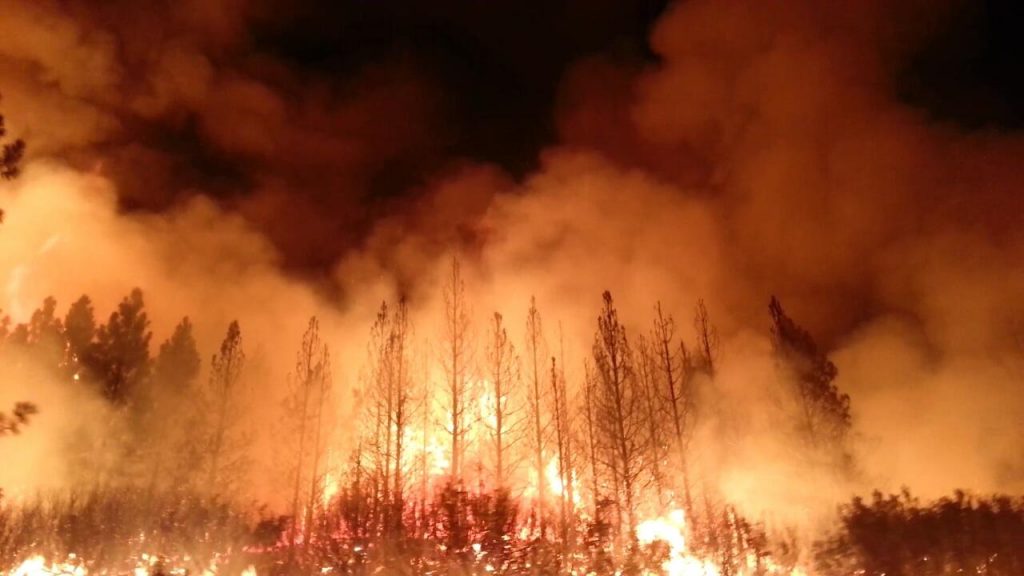Where in the world: A regional exploration of the IPCC report

9 August 2021
The sixth Intergovernmental Panel on Climate Change report painted a global picture of climate change. But for the first time, it also filled in the details by outlining the effects regionally.
Although there are some common themes globally (generally warmer temperatures and changes in precipitation), how this crisis manifests and continues to manifest will look different the worldover.
“Climate change is already affecting every region on Earth, in multiple ways,” said IPCC Working Group Co-Chair, Panmao Zhai. “The changes we experience will increase with additional warming.”
Within each region, the IPCC breaks down these changes we will experience even further. While we can’t cover every detail here, we can take a virtual trip around the world to broaden regional understanding.
Europe
Here in Europe we can expect warmer temperatures, increased flooding and sea level rise. Though there is variability, the trends observed here “cannot be explained without accounting for anthropogenic factors,” the report reads.
There will be fewer cold spells and frost days. So, we can also expect heatwaves to occur more often and more intensely. The continent can also expect to see increased precipitation and flooding, in all the regions besides the Mediterranean.
Sea level is projected to rise in all areas (except the Baltic Sea) regardless of how much temperatures continue to increase due to ice melting that has already been set into motion.. Extreme sea level events will become ‘more frequent’ and ‘more intense.’
Ireland is included in the Northern Europe region, which can expect to see increases in severe windstorms and increases in flooding.

Africa
Travelling south, Africa has seen heat extremes beyond the natural variability. These increases in temperature have been more rapid than the global averages, with human-caused climate change being the “dominant driver.”
The continent will largely see decreases in precipitation, resulting in drought and more arid conditions for agriculture. Though the projections also anticipate several regions to experience heavy rainfall and flooding that could overwhelm infrastructure.
Marine heatwaves have become more intense. Sea level rise will also occur and the West African Monsoon is projected to see increased precipitation and a delayed season.
Asia
In Asia, the climate varies from glaciers in the North, to the tropics in the Southwest. Thus, although this is one region, there are dramatically different expected effects.
In North Asia, permafrost is melting. Glaciers are declining in both the Himalayan Mountains and near the Artic. Run-off from the glaciers will increase, and seasonal snow duration will decline. Fire seasons are expected to increase and intensify.
While in the south, heatwaves and humid heat stress will be ‘more intense and frequent.’ The observed rainfall trends in the Southeast of the continent are not ‘spatially coherent or consistent.’ Similarly, the Monsoon in this region has weakened, changing the precipitation levels.
Across the region, “heat extremes have increased while cold extremes have decreased, and those trends will continue” reads the report. Lastly, the relative sea level as increased faster than the global average.
Australasia
In the land down under, land areas have already increased by 1.1°C to 1.4°C. The annual temperature changes are above ‘natural variability in all land regions.’
Most of this region’s population lives near the ocean, so relative sea level rising at a rate higher than the global average and a retreating of sandy shorelines may have drastic impacts.
An increase in marine heatwaves and ocean acidity has already been observed and is likely to increase. Inland, heavy rainfall and river floods are also expected to increase.
Fire season has intensified, is more frequent and lasts longer in more extreme weather. Sand and dust storms are also projected to increase. All these changes in “climatic impact-drivers” would be more widespread the higher the warming levels.

South America
Across the Pacific ocean, South America has already seen average temperatures increase, and this will continue at rates higher than the global average. Relative sea level in this region has also increased more than the global average.
Similar to other regions, this area will see increased temperatures and complicated precipitation projections. There will be more intense and frequent extreme rainfall, leading to overwhelming floods. In parts of the Amazon, the number of days with a temperature above 35°C could increase by more than 150 days.
The area is projected to see increased agricultural and ecological drought’ which can affect several different sectors, like health, agriculture, and ecosystems. These effects are in part due to an expected delay in the South American Monsoon.
North America
All regions in North America are expected to experience a change in their climate. Some areas will see common changes while others are more distinct, that could require “unique combinations of adaptation and risk-management challenges.”
Storms are expected to become more extreme. The South of this region will see heavier precipitation in hurricanes, while other areas would see severe storms or dust storms.
The West can expect increases in drought and fire weather. On the other extreme, this area and the entire region can also expect increases in extreme precipitation and flooding.
The report also reads that, “temperate change (mean and extremes) in observations in most regions is larger than the global mean and is attributed to human influence.”
Small Islands
Lastly, for islands in the Pacific Ocean, Indian Ocean and Caribbean sea, the biggest threat is sea level rise. Other changes include ocean acidification and changes in rainfall which lead to more aridity and severe droughts.
These islands will face more intense hurricanes. Storm surges can overwhelm the local infrastructure, endangering their population.
As an Island in the North Atlantic, Ireland faces different challenges than these small islands, but is also vulnerable to sea level rise and warming temperatures.
The IPCC report makes it clear that regardless of where you are in the world, climate change has already had or will impose some effect.
For more global exploration, check out the IPCC’s interactive atlas.
By Sam Starkey







